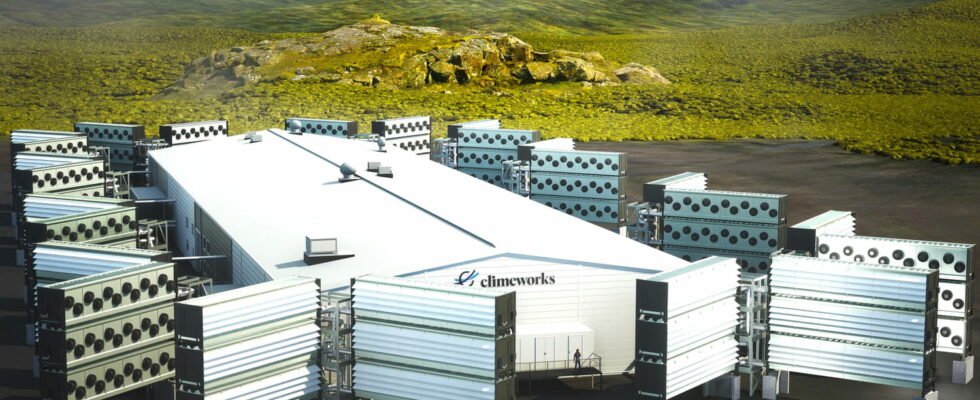A Swiss company has just put into service a revolutionary device, capable of sucking up and sustainably storing tons of CO2 each year, to fight global warming.
Imagine a huge “vacuum cleaner” capable of ridding our atmosphere of carbon dioxide, one of the main causes of global warming. It’s not science fiction, it’s real. This giant device, called Mammoth, has just entered service in Iceland. Designed by the Swiss company Climeworks, it promises to capture tons of CO2 for secure storage.
Mammoth works by sucking in the surrounding air to extract carbon dioxide using a system of sophisticated filters. Once captured, the CO2 is injected into basalt rocks deep underground, where it mineralizes and remains permanently trapped. This innovative process could become a key solution to combat climate change. The choice of Iceland to install Mammoth is not insignificant. The country is rich in geothermal energy, a clean and renewable energy source, which powers this gigantic machine. This ensures that the suction of CO2 does not itself generate polluting emissions. In other parts of the world, each potential site could choose a suitable green energy source, such as solar or wind power.
One of the most impressive aspects of this facility is its capacity. Each year, Mammoth can capture up to 36,000 tons of CO2, the equivalent of the annual emissions of 7,800 cars. However, this technology comes at a cost. Currently, removing a ton of CO2 costs around $1,000. For this technology to be truly viable and accessible on a large scale, this cost will have to be divided by 10, a goal that Climeworks estimates to achieve by 2050.
Climeworks is not its first attempt. Three years ago, the company had already commissioned Orca, a machine ten times smaller than Mammoth, but which already used the same principle of capturing and storing CO2. The goal of society is not to allow industries and individuals to continue to pollute without worrying about the consequences. Mammoth and its future variations are not an excuse to maintain our current habits in terms of greenhouse gas emissions. Rather, they are intended to complement efforts to reduce emissions, targeting CO2 that we will not be able to eliminate otherwise.
There are still many challenges to overcome. Reducing the cost of CO2 capture is essential, as is finding solutions for the long-term storage of mineralized CO2. But if these obstacles can be overcome, facilities like Mammoth could play a crucial role in combating climate change.
In the meantime, Mammoth’s entry into service is a sign of hope. It is a concrete demonstration that technological solutions can be developed and implemented to help save our planet. It remains to be seen whether these innovations will be sufficient and deployed at a scale necessary to make a significant difference. But every step in this direction is a victory for the future of our environment.
